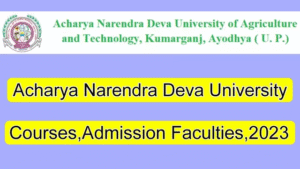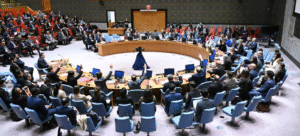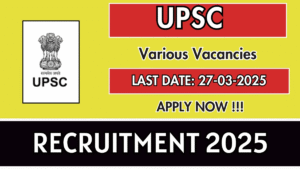Navigating the Labyrinth: Challenges and Reforms in India’s Government Job Recruitment Processes
Government jobs in India hold a unique and significant position, offering not just employment but also security, social prestige, and the opportunity to contribute to nation-building. The sheer volume of applicants for these coveted positions underscores their importance in a country with a vast and aspirational youth population. However, the recruitment processes for these jobs have historically been fraught with challenges, ranging from inefficiency and delays to allegations of corruption and a lack of transparency. Recognizing these systemic issues, successive governments have initiated reforms aimed at streamlining the process, ensuring fairness, and attracting the best talent to serve the nation. This essay will delve into the key challenges plaguing government job recruitment in India and analyze the significant reforms being implemented to address them.

The Logistical Nightmare: Scale and Inefficiency of Traditional Methods
One of the most persistent challenges has been the sheer scale and complexity of the recruitment exercises. With millions of aspirants vying for a limited number of vacancies across various levels and departments, organizing and conducting examinations becomes a logistical nightmare. Traditional methods, often involving paper-based tests and manual evaluation, are time-consuming, prone to errors, and lead to significant delays in the final selection. This protracted process can leave candidates in limbo for extended periods, hindering their career progression and causing frustration.
Erosion of Trust: Issues of Transparency and Fairness
Furthermore, the issue of transparency and fairness has been a long-standing concern. Allegations of favoritism, leakage of question papers, and manipulation of results have eroded public trust in the system. The lack of a robust and easily accessible mechanism for grievance redressal further exacerbates these concerns, leaving candidates feeling powerless against perceived injustices. This lack of transparency not only undermines the credibility of the recruitment process but also discourages meritorious candidates from participating.
Outdated Evaluation: Mismatch Between Skills Tested and Skills Needed
Another significant challenge lies in the archaic and often irrelevant nature of the selection criteria and examination patterns. Traditional examinations frequently focus on rote memorization and theoretical knowledge, failing to adequately assess the practical skills, aptitude, and problem-solving abilities required for effective governance in the 21st century. This mismatch between the skills tested and the skills needed can result in the selection of candidates who may not be best suited for the demands of public service.
Embracing Technology: The Shift Towards Online Examinations
Recognizing these deep-rooted issues, the Indian government has embarked on a path of reform aimed at modernizing and streamlining the recruitment processes. A key initiative in this direction has been the introduction and increasing reliance on online examinations. Computer-based tests offer numerous advantages, including faster processing of results, enhanced security against paper leaks, and the ability to conduct large-scale examinations more efficiently. The use of standardized testing agencies and online platforms is gradually reducing the time taken for various stages of the recruitment process.
Promoting Openness: Enhancing Transparency and Accountability
Another significant reform has been the emphasis on greater transparency and accountability. Many recruiting bodies are now making information regarding vacancies, examination schedules, syllabi, and results readily available online. The introduction of online application processes and the provision of answer keys and marksheets to candidates enhance transparency and allow for greater scrutiny. Furthermore, the establishment of dedicated helplines and grievance redressal mechanisms provides candidates with avenues to address their concerns.
Modernizing Assessment: Reforming Examination Patterns and Criteria
Efforts are also underway to reform the examination patterns and selection criteria to better assess the relevant skills and competencies. Some recruiting bodies are incorporating objective-type questions, aptitude tests, and even skill-based assessments to evaluate candidates beyond their theoretical knowledge. The focus is shifting towards identifying individuals with analytical abilities, problem-solving skills, and a genuine aptitude for public service.
Towards a Unified System: The Role of the National Recruitment Agency (NRA)
The establishment of the National Recruitment Agency (NRA) marks a significant step towards a unified and standardized recruitment process for non-gazetted posts in the central government. The NRA aims to conduct a Common Eligibility Test (CET) which will serve as a preliminary screening test for various recruitment agencies, eliminating the need for candidates to appear for multiple preliminary examinations. This initiative promises to reduce the burden on both candidates and recruiting agencies, save time and resources, and bring greater uniformity to the initial stages of recruitment.
Persistent Challenges: Infrastructure, Equity, and Coordination
However, despite these commendable reforms, challenges persist. Ensuring the robustness and security of online examination infrastructure across the country, particularly in remote areas with limited internet connectivity, remains a hurdle. Addressing the digital divide and ensuring equitable access to online resources for all aspirants is crucial for the success of these reforms. Furthermore, the implementation of reforms requires effective coordination and collaboration among various recruiting agencies and government departments. Resistance to change and bureaucratic inertia can also hinder the pace of progress.
A Continuous Journey Towards Fair and Efficient Recruitment
In conclusion, the recruitment processes for government jobs in India are undergoing a significant transformation. The shift towards online examinations, greater transparency, reformed selection criteria, and the establishment of the NRA represent crucial steps in addressing the long-standing challenges of inefficiency, lack of transparency, and outdated practices. While these reforms hold immense promise for creating a fairer, more efficient, and merit-based system, their successful implementation requires sustained commitment, effective coordination, and a continuous focus on addressing the evolving needs of both the aspirants and the government. By navigating the remaining labyrinthine aspects with diligence and innovation, India can ensure that its government services are staffed with the most capable and dedicated individuals, ultimately contributing to the nation’s progress and prosperity.




















